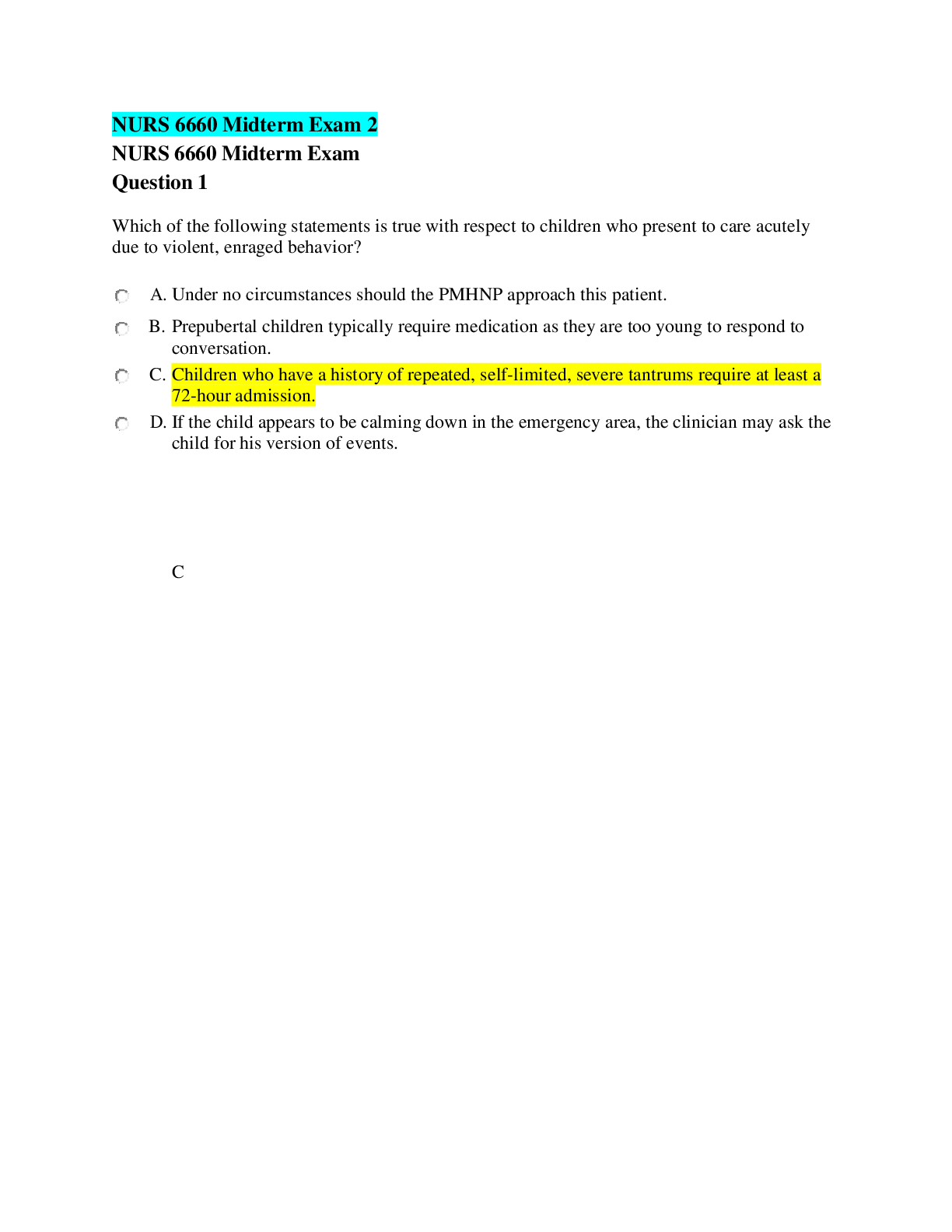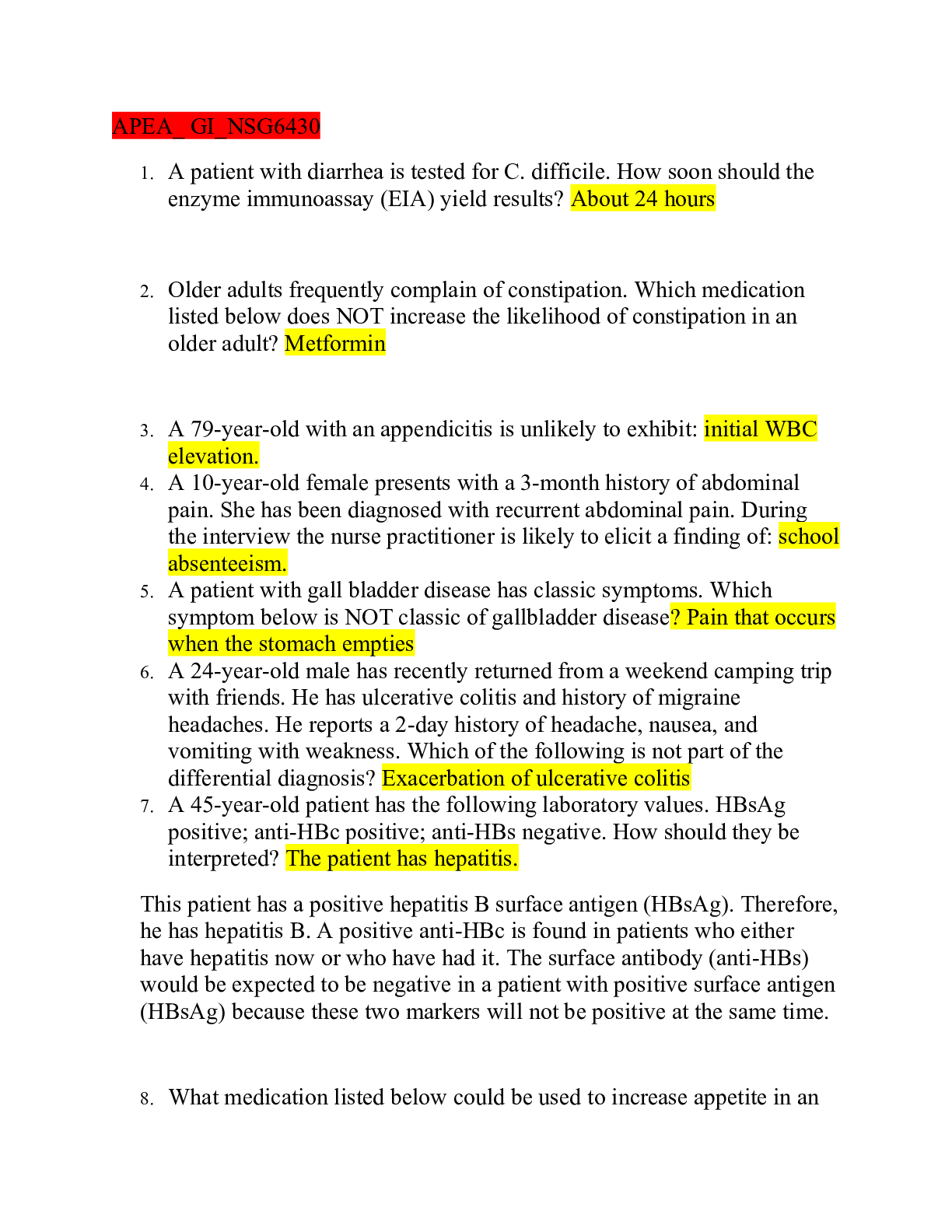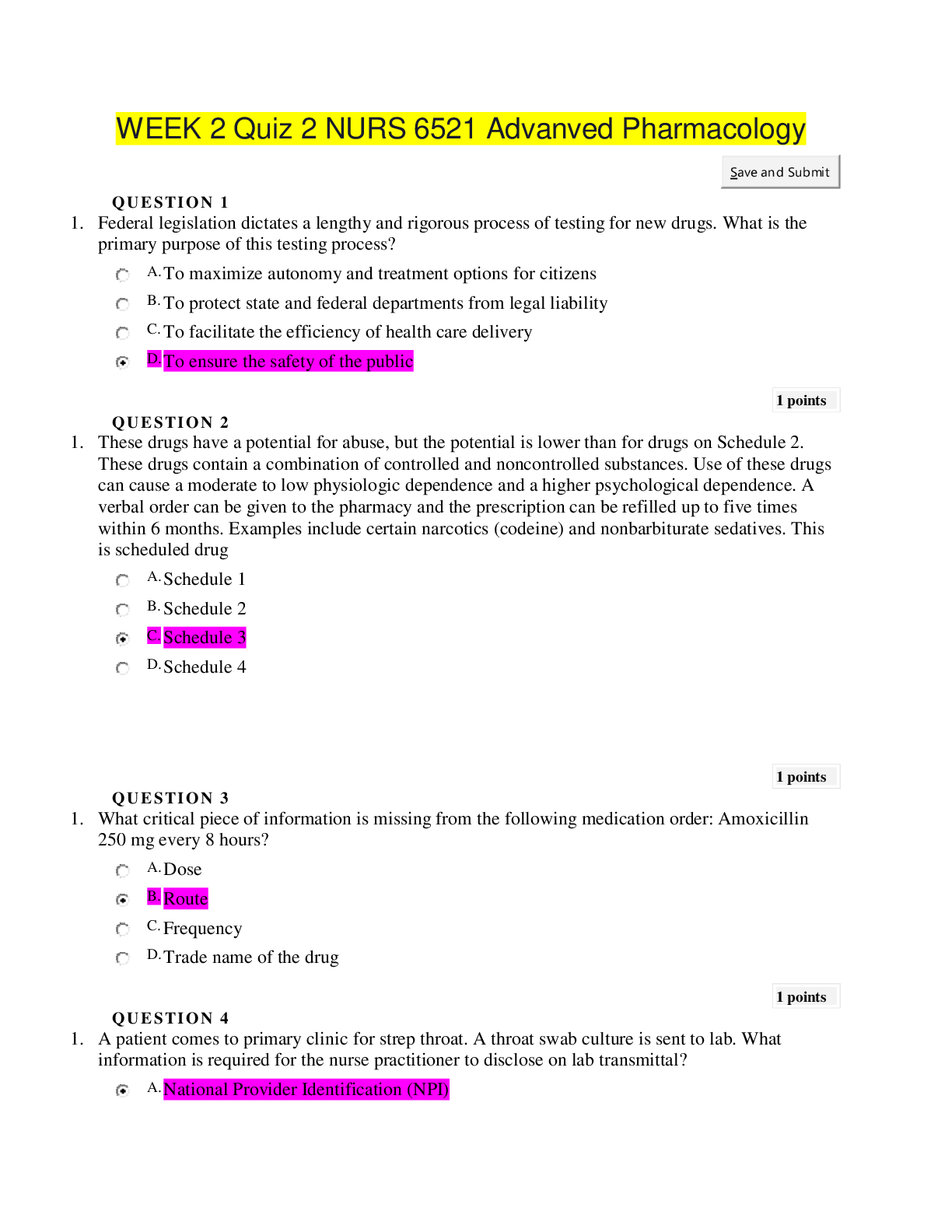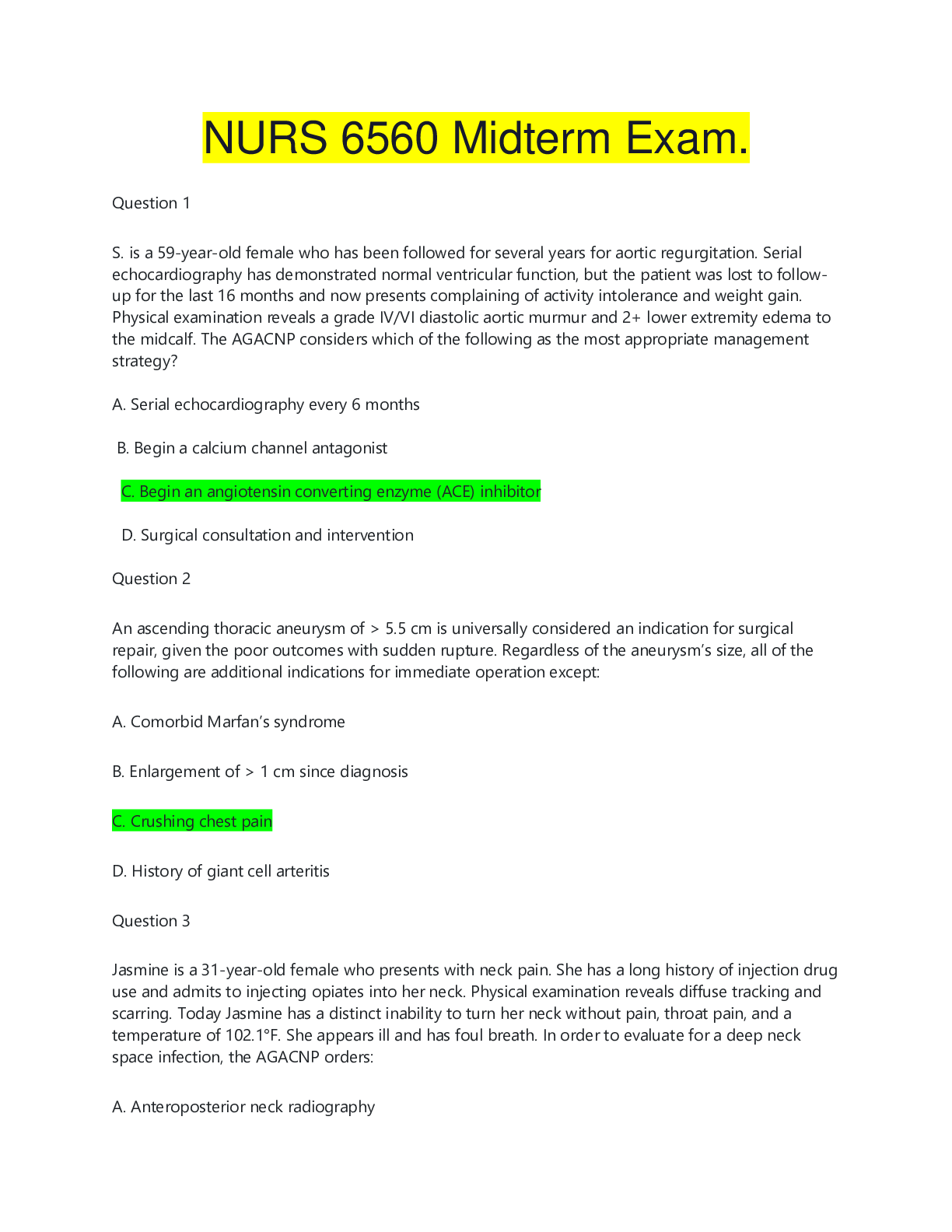NCLEX perfusion | Exam Questions and Answers | 2024/2025
Document Content and Description Below
1. The sympathetic nervous system would be expected to have which of the following effects? [Select all that apply] a. Stimulate the heart to beat faster b. Speed conduction through the AV node c.... Cause the heart muscle to contract harder d. Decrease overall vascular volume e. Increase total peripheral resistance. It increases your blood pressure vessels 2. Clinically, dysrhythmias, or arrhythmias, cause a. Altered cardiac output that could affect all cells b. Changes in capillary filling pressures c. Alterations in osmotic pressure d. Valvular dysfunction 3. A client is brought to the ER with a suspected MI. The client is very upset because he had just had an ECG in his doctor’s office and it was fine. The explanation of this common phenomenon would include the fact that a. ECG only reflects changes in cardiac output b. ECG is not an accurate test c. ECG only measures flow of electrical current through the heart at one specific moment & is not a predictor of future events d. ECG is not related to heart problems 4. Cardiac contraction and relaxation are controlled by a. Specific area of the brain b. Sympathetic nervous system c. Autonomic nervous system d. Spontaneous impulses arising within the heart 5. Drug of choice for treatment of supraventricular tachycardia a. Digoxin b. Verapamil c. Lidocaine d. Adenosine 6. A patient receiving an antiarrhythmic drug needs a. Constant cardiac monitoring & vital signs measurements until stabilized b. Frequent blood tests, including drug levels c. Antidepressant to deal with psychological depression d. Dietary changes to prevent irritation of heart muscle 7. Antiarrhythmics drugs alter action potential of cardiac cells. Because they alter action potential, antiarrhythmic drugs often a. Cause HF b. Alter blood flow to the kidneys c. Cause new arrhythmias d. Cause electrolyte disturbances 8. The conduction system of the heart includes which of the following [Select all that apply] a. SA node b. Sinuses of Valsalva c. Atrial ventricular [AV] node d. Purkinje fibers e. Coronary sinus f. Bundle of HIS 9. Arrhythmias or dysrhythmias can be caused by which of the following? [Select all that apply] a. Hypoxia of heart muscle cells b. Acidosis near myocardial cells c. Structural damage in conduction pathway of heart d. Vasodilation in myocardial vascular bed e. Thyroid hormone imbalance f. Electrolyte imbalances 10. A 45 year-old patient is admitted with a history of asthma and a new incidence of irregular pulse. ECG waveform tracing reveals atrial fibrillation with ventricular response rate @ 160 beats/min. Which of the following medications could be a concern if ordered for rate control for this patient? a. Diltiazem [Cardizem] b. Propranolol [Inderal] because is a non-selective beta blockers. Since he got Asthma. It affects breathing. c. Digoxin [Lanoxin] d. Adenosine [Adenocard] 11. A patient is brought into the ER with a potentially life-threatening ventricular arrhythmia. ECG waveform reveals sustained ventricular tachycardia with decreased level of consciousness & low blood pressure. What electrical treatment is expected for this patient? a. Defibrillation b. External pacing c. 12 Lead ECG d. Cardioversion [Show More]
Last updated: 8 months ago
Preview 1 out of 3 pages

Loading document previews ...
Buy this document to get the full access instantly
Instant Download Access after purchase
Buy NowInstant download
We Accept:

Reviews( 0 )
$9.50
Can't find what you want? Try our AI powered Search
Document information
Connected school, study & course
About the document
Uploaded On
Oct 07, 2019
Number of pages
3
Written in
Additional information
This document has been written for:
Uploaded
Oct 07, 2019
Downloads
0
Views
151


























